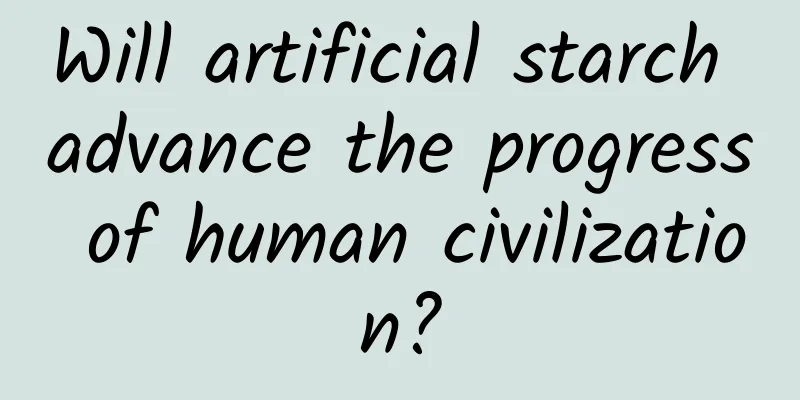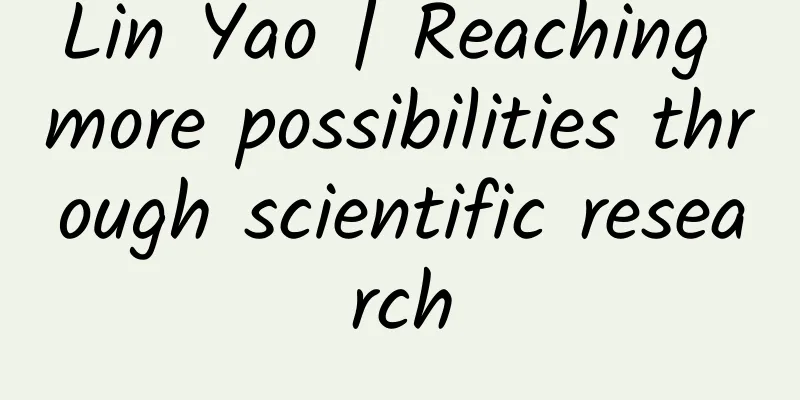Will artificial starch advance the progress of human civilization?

|
After six years of exploration, the research team of Tianjin Institute of Industrial Biotechnology of the Chinese Academy of Sciences has achieved the first artificial synthesis of starch molecules in the laboratory. This result was published online in the American magazine Science in the early morning of September 24. The synthesis of artificial starch is a typical original breakthrough from 0 to 1. If this research result can enter mature commercial production, it will have a revolutionary impact on the future agricultural field, especially food production, and will be a milestone in the development of the global biomanufacturing industry. It may also accelerate the development of human civilization. (Photo source: Visual China) Human beings started from primitive civilization, and then developed into agricultural civilization and industrial civilization. Now, they are developing towards the higher stage of industrial civilization, namely ecological civilization. Although industrial civilization provides sufficient food and wealth for human beings, it also over-exploits the earth's resources and ecological environment. In order to meet the growing needs of human beings and ensure sustainable development, a method superior to agricultural civilization and industrial civilization is needed. Starch can be found everywhere in daily life. It is not only the main component of food, but also an important industrial raw material. Cooking seasonings, skin care cosmetics, magazine cover paper, capsule shells, cotton yarn textiles... all use starch. There are about 30,000 products in the world that use starch as raw material. The ability to artificially synthesize starch means that food production can be converted from agriculture to industrial production. Artificially synthesized starch uses high-concentration carbon dioxide emitted by thermal power plants and cement plants as raw materials, converts low-density solar energy into high-density electricity/hydrogen energy as energy, forms simple hydrocarbons, and then biosynthesizes starch from hydrocarbons. Obviously, the production of artificial starch is a big step towards ecological civilization. It is highly efficient, less polluting to the environment, less energy demand, and also uses greenhouse gas - carbon dioxide. Preliminary laboratory tests show that the efficiency of artificial starch synthesis is about 8.5 times that of traditional agricultural starch production. Under the condition of sufficient energy supply and according to current technical parameters, theoretically, the annual starch production of a bioreactor of 1 cubic meter is equivalent to the annual starch production of 5 mu of corn fields in my country. Maybe 50 years later, one day in September 2071, a lady living in Beijing wants to place an order for high-gluten flour. The production workshop only needs to adjust the proportion of straight-chain starch to a higher level than that of amylopectin to synthesize artificial starch, and it can be quickly produced and delivered. By then, people may have gradually become accustomed to eating artificial starch, which tastes and is similar to wheat flour in taste and nutrition, and is cheaper. At the same time, cities across the country may also be basically free of smog, and summers will not be hot, because the high concentrations of carbon dioxide emitted by industrial production such as thermal power plants, steel mills and cement plants are used to produce people's food. The sky is bluer, the water is greener, and people's lives and production methods have also changed. On the other hand, after solving the food problem for human beings, large-scale artificial starch synthesis will also promote the transfer of human civilization or its integration with other civilizations. When human beings go to space to explore extraterrestrial civilizations and expand living space, artificial starch synthesis can meet the dietary needs of human beings in space exploration to the greatest extent, and in fact, it also provides the basis and possibility for the outward development of human civilization and the communication and integration with extraterrestrial civilizations. Perhaps 50 years later, on a certain day in September 2071, a space shuttle launch station in northwest China is busy, and China's Shenzhou 501 is preparing to launch and fly to another planet outside the solar system, Kepler-62e, for exploration. This planet is highly similar to the Earth, and is almost covered by oceans, with soil and rocky surfaces, cloudy skies, and a warm and humid climate. Therefore, this is an ideal place for humans to explore and contact extraterrestrial life. It may take a year or so to fly to Kepler-62e. During the preparation on the ground, five 1-cubic-meter artificial starch generators and several water generators were installed in the Shenzhou 501 cabin. This ensures that astronauts and researchers will not lack food and water during the entire journey to Kepler-62e. This is an ideal application scenario for artificially synthesized starch to change human life and promote the development and transformation of human civilization after it becomes popular and becomes the main food for people. Whether it can be realized may require long-term efforts. Artificial starch synthesis is just a good start. Calculated from input and output, only when the efficiency of electricity utilization from carbon dioxide to starch synthesis is increased several times, and the carbon conversion rate of starch synthesis is increased dozens of times, can it compete with agricultural planting. In this way, more than 90% of arable land and fresh water resources can be saved, and the negative impact of pesticides and fertilizers on the environment can be avoided. ▲ Cai Tao, associate researcher at the Tianjin Institute of Industrial Biotechnology, Chinese Academy of Sciences, shows a sample of artificially synthesized starch in the laboratory (photo taken on September 16). Photo by Xinhua News Agency reporter Jin Liwang Currently, artificial starch synthesis requires at least 10 kinds of enzymes to gradually convert one-carbon methanol into three-carbon dihydroxyacetone, further into six-carbon glucose phosphate, and finally into starch. Moreover, this process involves 11 biochemical reactions. Therefore, if artificial starch is to become a food product with lower cost, same yield, better nutrition and taste than agricultural products such as wheat, rice, corn, etc., it still needs technical improvements, and more work needs to be put into the processing of the product after it is produced. Artificially synthesized starch and similar inventions may accelerate the progress of human civilization, but there is still a long way to go. References Major breakthrough! Artificially synthesized starch appears in Science, five questions about the new achievement, China Science Daily, 2021/9/24 http://news.sciencenet.cn/htmlnews/2021/9/465769.shtm Written by Zhang Tiankan (columnist) Edited by Ji Jingjing Produced by: Science Central Kitchen Produced by: Beijing Science and Technology News | Science Plus Client Welcome to share to your circle of friends Reproduction without authorization is prohibited |
Recommend
Why are water bears so tenacious? New research reveals their "secrets" | Science and Technology Weekly
Compiled by Zhou Shuyi and Wang Xiang Why are wat...
Attracting new users: What is the difference between To B and To C?
The core task of attracting new users is to promo...
High! Really high!
What does a 70-story high bridge pier look like? ...
Are luxury goods suitable for TikTok marketing? ?
Last week, TikTok officially announced that its g...
How to get "Apple Recommended" for a good game? There is a routine
It goes without saying that "Apple Recommend...
A demonstration of user growth from Pinduoduo and Douyin!
The 2019 New Year’s Eve concert has just ended. T...
A new beginning, BYD Auto announced a new logo on January 1
On January 1, BYD Auto officially released its ne...
WeChat doesn’t need more lapdogs who only know how to praise
On December 19, some WeChat public accounts allow...
How to become a good copywriter? First of all, you must learn to grasp the best selling point!
If you were asked to write copy for a product now...
Introduction to placing Wenchang Tower for people born in the Year of the Pig in 2020
Introduction to placing Wenchang Tower for people...
Introduction to Huawei App Market paid promotion process and resource positions!
Introduction to Huawei AppGallery Paid Promotion ...
Can you believe it? Some people can actually smell disease, and a super smeller has confirmed it!
In the novel "Perfume", the protagonist...
CEIDCO: 2024 Global Electricity Development Index Research Report
Electricity is the core and key link in building ...
Will humans achieve active evolution and become one with machines? He is the world's first cyborg
Since the first single-cell life appeared on Eart...
WeChat PC version updated: you can watch video accounts, it is more convenient to slack off
On March 24, WeChat Windows version was recently ...









